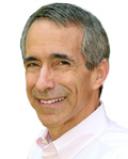

Teaching Your Body
Feel exhorted, cajoled, pushed and nagged into “exercise?" Most folks know it’s good for you, but so are vegetables (though not recent Romaine from Yuma.) They just don't really know how exercise works.
Witness a recent study in Circulation, demonstrating that in people at high and low genetic risk of heart disease, relatively moderate exercise cut heart attack risk in half and atrial fibrillation risk 60%. Not small changes, when cardiovascular disease is the nation’s biggest killer and up to half of personal risk is genetic.
The reaction of patients when I told them? “What else is new?” Or “Why should I extend my life doing something I don’t like?”
The answer lies in what has been a fundamental misreading of the body, The body is not a machine that slowly and inevitably breaks down. It's better to see the body as living information, constantly updated and learned.
That view is far more accurate and useful. For it explains much more effectively why exercise works – because it teaches the body, and the body always needs to learn.
Big Muscles
Talk to people about exercise and they think about muscles. Exercise means “bigger muscles,” something many do not want (and won’t necessarily get – some people have genetic variants that allow stronger, but not bigger muscles through physical activity.) Next up in people’s minds come joints, that almost any exercise “might hurt my joints.” The mental daisy chain then often shifts to worries about ligaments and connective tissue, plus some concerns regarding skin.
Yet exercise is a systemic activity. It's about far more than muscles and joints. Exercise changes the whole body. Especially the brain.
Because people who engage in even moderate exercise will grow new brain cells, in memory areas, even during sleep. Exercise is an information event for the whole body. The brain learns from exercise and stores the increased information, creating new connections and memory cells to do it.
BioInformation
The body is an information system that constantly updates and learns. The environment changes, we change. That includes not just the external environment we exercise in, but our internal one, particularly the vast ecosystem of bacteria, viruses, fungi and the like that make us us.
Let’s illustrate what a simple walk does to teach different organs:
Brain – Moving in three dimensional space is a formidably complex adventure. Walking across the street dodging 95 year olds with macular degeneration, errant drivers who consider pedestrians potential roadkill, potholes and plastic bottles, is more than a cognitive challenge. Every organ in the body must pitch in, and what they’ve learned is updated and sent to the brain where it will be coordinated, distributed, and stored for future learning. No wonder new brain cells get created.
Immunity – sitting at the exercycle allows you congress with more than fellow gym rats, but potentially most of their bacteria and viruses, not to mention the interesting stuff that grows on the equipment and the perfectly clean air ducts of the ventilating system the staff attends to every seven to ten years. This immune challenge is formidable. No wonder that a single walk in the morning may cut colds by half, as well as their severity, or that overall immunity is improved enough that many tumors, however quickly formed, never provoke disease, lowering overall cancer rates.
Heart – since most of the heart is replaced in three days it’s no surprise that exercise of virtually any type – walking up and down the stairs, running to a bus – provokes more efficient and effective hearts. That exercise may “clean” arteries, provoking inflammatory cells to wholly different efforts on keeping atherosclerosis from blood vessels, helps explain the results of the Circulation study above. You don’t just get stronger, more effective and efficient hearts, you get longer lasting ones.
Liver – usually undiscussed by the public except in culinary terms, the liver as metabolic workplace is highly activated by exercise, pushed to create new proteins, metabolites, glucose and fat molecules that fundamentally change all the other organs in ways that mainly remain undiscovered. What is the liver under exercise doing to the “new organ” of interstitial fluid canals between cells and tissues that goes up to make lymph, and may prove critical to cancer metastasis? Most physiologists don’t have a clue.
Muscles and Joints – The outmoded machine model of the body would argue that marked use provokes an early demise. The opposite is true. Muscles and joints learn with exercise. Folks with arthritis know “motion is lotion” because joints don’t fall apart; they fail to rebuild properly. The body normally regenerates, not degenerates. Exercise provokes new cell growth, new cell cooperativity, new intercellular connections that makes muscles more efficient and effective. Not only are many special genes “turned on” by exercise, though processes unknown that certainly include nerves and blood vessels but may include packets of small molecules released into the blood, muscle cells communicate their new status to all other organs.
Similar processes of transformation and learning occur in all the other organs you can name.
Bottom Line
Most Americans don’t move much. One reason is a misconception of how the body works and gains knowledge.
Our bodies are biologically intelligent. We are living bioinformation. To stay healthy is to learn, to get the many biological information systems, including organs, working effectively and together.
Exercise is a process that fosters special learning in many organs, leading to an energized body and brain whose learning is continuous, including during sleep.
Physical Education is not just for your muscles. It’s for your brain – and everything else.



